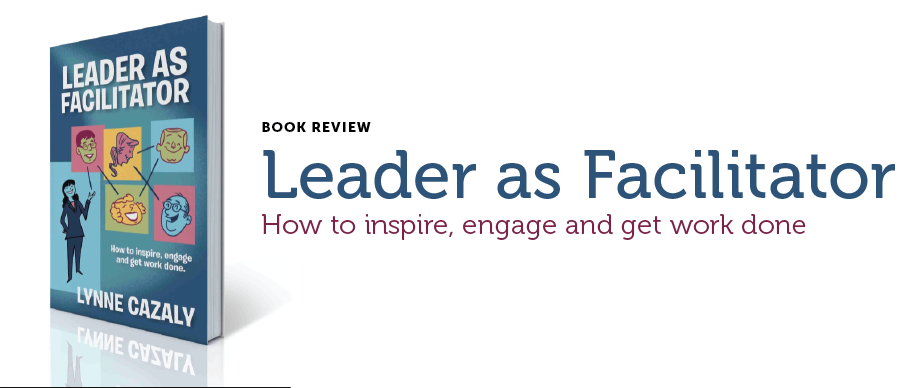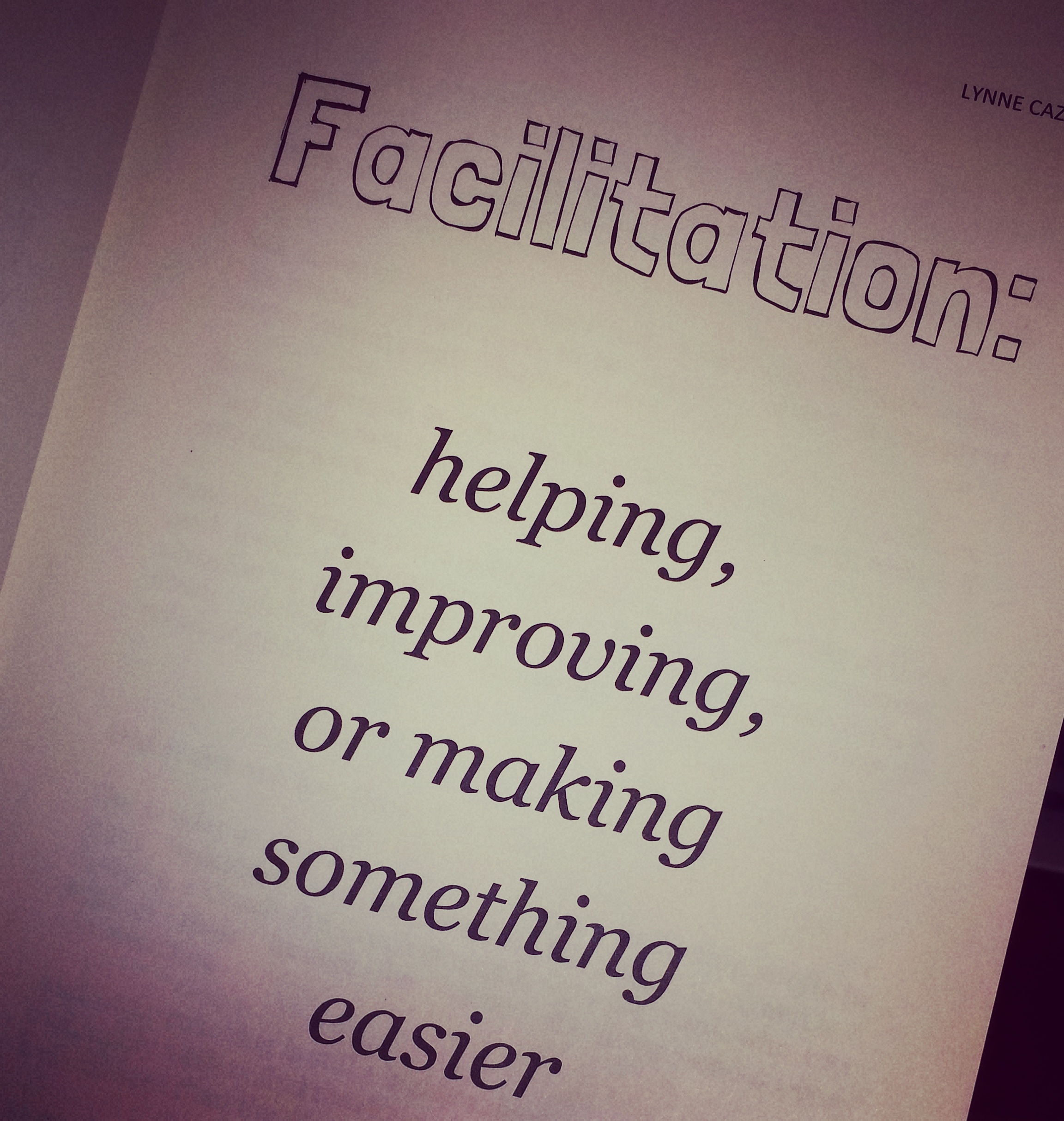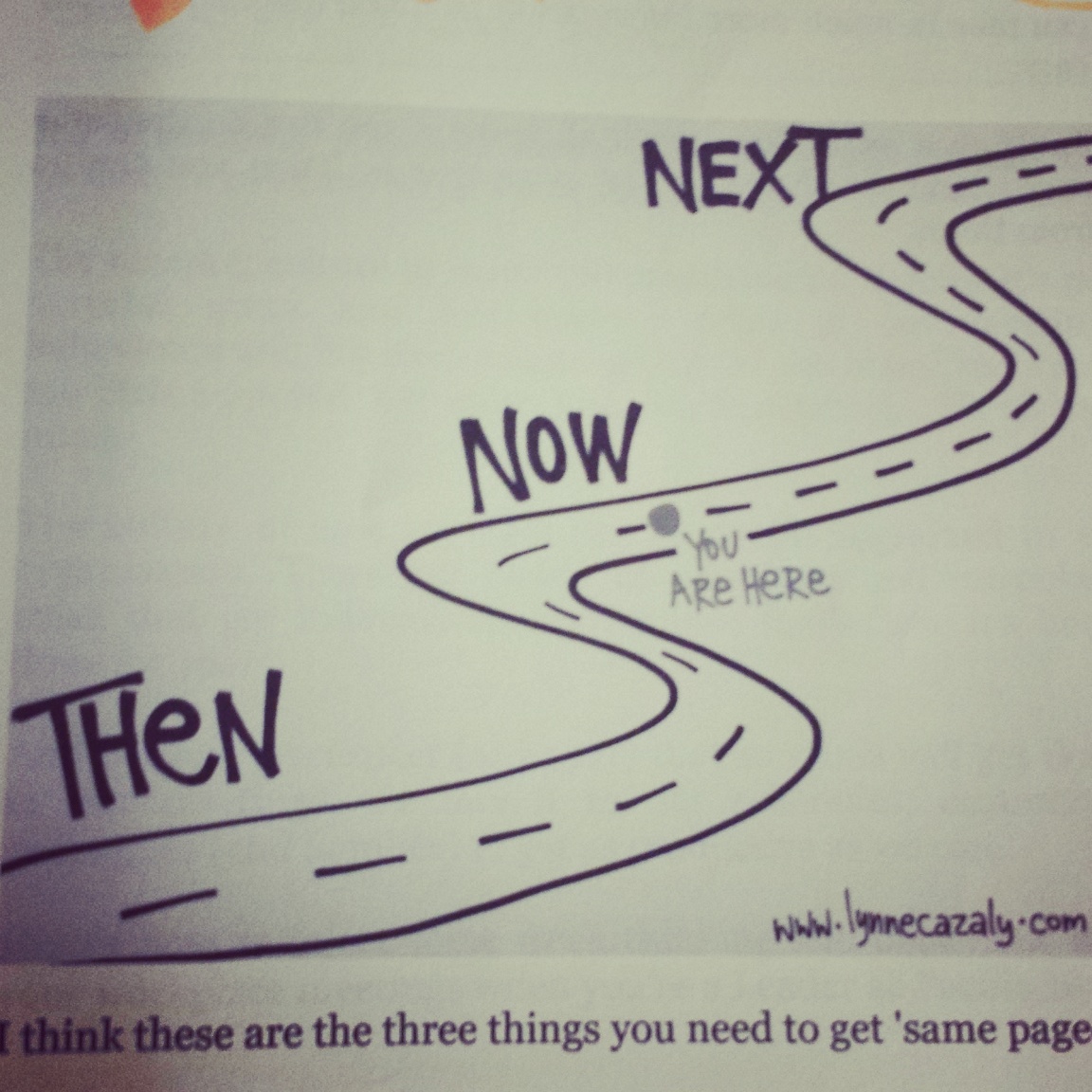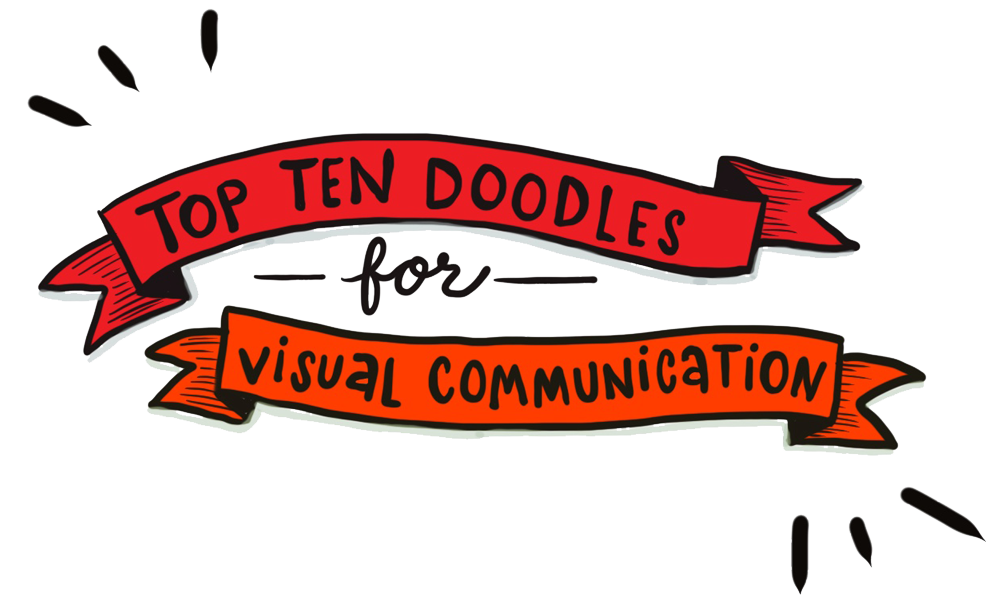Why I chose to read this book
“Facilitation: helping, improving, or making something easier” ¹
“Leadership emerges from a desire to help others” ²
I was drawn to this book since the author is both a visual scribe and a master meeting leader, as well as a frequent keynote speaker and author of several books on innovation and visual thinking.
I am new to practicing a type of visual communication called graphic recording which entails capturing an event (like a workshop, presentation, strategy or other type of meeting) with words, color and pictures, silently working live and on a large scale.
Graphic facilitation is a close parallel to graphic recording but takes it a few steps further so the person facilitating the meeting is also creating visuals – a more evolved practice for experienced facilitators. Through the branding workshops I lead with clients I know I enjoy helping individuals and groups make meaning and come to agreement, BUT so far I have not discovered a way to combine facilitation with visuals. I don’t have the experience with this aspect of the work and it is not easy to find in-person training in how drawing can be used as a facilitation and leadership tool to help groups understand complex information and make decisions on next steps.
First impressions
Leader as Facilitator is written primarily (I think) for an audience with substantial experience engaging professionally as a leader and facilitator with businesses and corporations (as opposed to nonprofits, academic institutions, or NGOs for example). The writing style is breezy, slightly irreverent and styled in short phrases and chunks of thoughts rather than lengthy paragraphs, which makes it a fun read. I was pleased to note several instances where Cazaly mentions visuals and how they can be incorporated into meeting facilitation, due to my strong interest in this aspect of the work.
On the other hand, I felt the book was light on content – definitely not a deep dive into the subject. For the most part it focuses on condemning what’s wrong in the world of meeting facilitation and does not provide ample examples on how to do it right, which left me wanting more. Here are several examples:
- On the topic of how to open or start a meeting, Cazaly provides a list of ideas. One is: “Conduct an icebreaker that’s relevant (no corny ‘Pass the Orange’ or ‘Break the Balloon’ games…. ok?)” (p.167). So now I know what not to do, and while I understand that activities need to be customized to the meeting theme and group at hand, having a few examples of what she employs in different situations would be helpful.
- On the subject of avoiding clichés around decision-making she declares, “Set up a clear decision-making process and use that.” (p.153) Examples of decision-making processes would be useful here.
- Earlier I noted my strong interest in using visuals while being a leader as facilitator. Even here I feel the book’s content is disappointing. In a section entitled “Big Paper for BIG ideas” Cazaly describes her “long paper charts” and how one of them is used “…when everyone in the session was introducing themselves. This serves as a great anchor for the participants to bring them ‘into the room’ and onto the story wall that was being completed during the workshop.” (p.118) What’s a story wall – does she write what people say? Do the attendees come up and write something? I would love to see an example of one she’s completed.
- Similarly, one visual tool Cazaly does illustrate is a “Then/Now/Next” map to “get people on the same page” by “actually putting your thinking on a page”. There is an image of a squiggly road drawn on a large piece of paper with the word Then at one end of the path, Now in the middle of the path, and Next at the other end. This tool serves to “help people see where things were”, “where you are now”, and “what’s planned next”. However I wish she could have gone a step further and shown us a completed page, to see a real-life example (p 58-60).
Ideas and concepts I liked
- Cazaly gets specific when describing her Facilitator 4-step process (p.123 – 126) which is a simple way to state the reason for being in the meeting, hear everyone’s ideas and opinions, and then come up with actionable solutions. I appreciate the clever way she presents each step along with a guiding question:
- Backstory – What do we know?
- Opinions – What do we think?
- Ideas – What could we do?
- Outcomes – What will we do?
- In a section called Boarding Music (p. 88 – 93), the author laments the missed opportunity for so many leaders to set the stage for a great meeting by playing music that establishes a mood for the group: “It shifts the focus, fills the silence and helps make for a creative environment. It switches on our ears; we’re ready to listen” (p. 88-89). And while she seems proud of her idea of creating “a very cool sound track”, I have mixed feelings about this technique. On the one hand, I am sensitive to smells and sounds, and when it comes to music – well, I like what I like, and have strong feelings about what I don’t like. In other words, for better or worse, I am easily irritated by music that is not on my preferred list. I’m certain however that many people could care less and would happily “go with the flow”. On the other hand, I recently attended an innovation conference and listened expectantly for sounds that would signal the start of a special day. Nope, nothing. The event began with breakfast in a large room to the sounds of silence, launching directly into a video and then to opening remarks from the MC. It did indeed seem like it could have been a way to create energy in the room and signal to the attendees that this is something different, a special time to be open and productive.
- In my efforts as a workshop presenter, I have a hard time bringing conversation back around to the topic at hand when it goes off on a tangent. Cazaly provides helpful insights into how to deal with this common problem. In fact, she has a list of fifteen tips in a list called Staying on Topic (p. 171 – 173). There are so many great ideas here. A few of my favorite ah-ha! moments from reading this list:
- “Say early on that if we go off topic, as session leader you’ll be bringing things back on topic – check you have their permission to do this” (p. 171)
- “Capture comments visually on a whiteboard or flip chart up-front in the room to check their relationship to the main topic being discussed” (p. 172)
- Ask pointed questions: “Use the powerful ‘wondering’ question: ‘I’m wondering if what we’re talking about now is related to out topic?” and “Is this directly related to project x today?” (p. 172)
- I learned about the difference between convergent and divergent thinking – the former is a way to “narrow it down, close it up”, as opposed to the latter which is a way to “open up the conversation” (p. 143) – and how to employ both to guide an effective discussion.
- Similarly, I read with interest about the use of open questions (“who, what, when, where, why, how, tell me about”) and to be wary of falling into the trap of asking too many closed questions (“is, are, did, would, could, can”) that can be answered, oftentimes too simply – with a yes or a no (p. 176).
My role as “leader as facilitator”
While I wish the book could have been more practical for someone at my level of experience with leadership and facilitation – a resource list and index would have been nice additions – it did make me think more critically of workshops and other educational events I’ve attended recently, and how the facilitators there were already employing some of Cazaly’s ideas – or what they should be doing in order to have a more effective outcome – and of course, how I can also employ some of those same techniques to evolve in my own role as Leader as Facilitator.
¹ Cazaly, L. (2016). Leader as Facilitator: How to inspire, engage and get work done. Australia; Lynne Cazaly, p. 7
² Marzano, R.J., Waters, T, and McNulty B.A. (2005). School Leadership That Works: From research to results. Alexandria, Virginia: Association for Supervision and Curriculum Development, p. 16




Wow, many thanks for your review of ‘Leader as Facilitator’.
For some more visual thinking goodness, there are my other books ‘Visual Mojo’ (like a workshop in a book on drawing and sketching) and ‘Making Sense’ (facilitating with simple visual models). Let me know your postal address and I’d be happy to send you copies of each of these with my compliments. They might fill some of the gaps that you were expecting to be filled by Leader as Facilitator. And as always with readers and supporters of my thinking, you’re welcome to email me with questions – I’m always happy to respond and provide insights, examples and further details to expand on my books and workshops. http://www.lynnecazaly.com